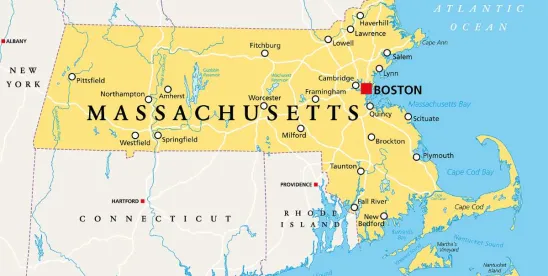The Nahant Preservation Trust, the town of Nahant, and certain Nahant residents have suffered another loss in their years-long legal battle to stop Northeastern University from expanding its Marine Science Center, located on East Point in Nahant. The Massachusetts Appeals Court recently affirmed the dismissal of the legal actions, finding that the plaintiffs had no reasonable expectation of proving that Northeastern dedicated the 12 acres of land at issue to the public for use as an ecological preserve.
The dispute – and the Appeals Court decision – required an analysis of the “public dedication doctrine” to determine whether the land was subject to Article 97 of the Amendments to the Massachusetts Constitution. Art. 97 provides, in part, that property “taken or acquired” for conservation purposes “shall not be used for other purposes” without approval by a two-thirds vote of each branch of the state legislature. In Nahant Preservation Trust v. Northeastern University (pdf), the Appeals Court concluded that the land at issue is not subject to Art. 97.
Land is dedicated to a public purpose when the landowner’s intent to do so is clear and unequivocal, and when the public accepts the dedication by actually using the land for the public purpose. In 2017, the Supreme Judicial Court (SJC), in Smith v. City of Westfield, expanded the reach of Art. 97 by concluding that municipal parkland may be protected even if not officially taken or acquired, as long as it was “designated” for an Art. 97 purpose.
The Nahant dispute arose when Northeastern announced plans to expand its Marine Science Center located on a peninsula known as East Point. The plaintiffs contended that Northeastern had permanently dedicated the 12 undeveloped acres of its land to the public for use as an ecological preserve and for passive recreation. Therefore, they argued, the land was subject to Art. 97 and the project could not proceed without legislative approval. The plaintiffs compiled and presented to the superior court judge a substantial record, including historical documents concerning Northeastern’s acquisition of the land, which had been used for military purposes by the United States Army and Navy in the 1940s and 1050s. The evidence also included documents that reflected the Town of Nahant’s decision in 1964 not to acquire the property, despite the conservation commission’s desire to have at least a scenic pathway along the shoreline of the property.
Although the summary judgment record contained conflicting evidence regarding the extent of public access and use of Northeastern’s property by town residents, the courts accepted that some town residents had used the area for general recreation over the years. There was evidence that Northeastern had permitted some recreational use of the land. The Appeals Court noted in its decision, however, that the plaintiffs must prove that the disputed land was actually dedicated to the public.
In rejecting the plaintiffs’ arguments, the Appeals Court stated that the public dedication doctrine requires a property owner’s acts and declarations to be “deliberate, unequivocal and decisive, manifesting a clear intention permanently to abandon his property to the specific public use.” The Court noted that the SJC’s finding in Smith that there had been a dedication was based on an acceptance of Federal funds to rehabilitate a playground with the proviso that the city was surrendering its ability to convert the playground to a use other than public outdoor recreation.
The Appeals Court parsed the evidence on which the plaintiffs relied to demonstrate that Northeastern had “clearly and unequivocally” intended to dedicate the disputed land to the public. The plaintiffs pointed to the public’s use of the land as evidence of Northeastern’s intent to dedicate the property. Citing precedent from 1873 to Smith, the Appeals Court stated that “public use, alone, is not enough to prove a public dedication, particularly in circumstances like those present [in Nahant].”
Based on its review of the extensive summary judgment record, in the light most favorable to the plaintiffs, the Appeals Court concluded that the plaintiffs had no reasonable expectation of proving that Northeastern dedicated the 12 acres at issue to the public for use as an ecological preserve. It appears that Northeastern may finally proceed with its plans announced in 2018 to build a new research facility at its Marine Science Center in Nahant.



 />i
/>i
